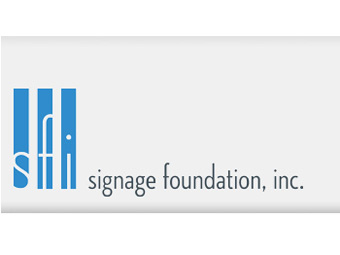 There is no statistical relationship between the installation of electronic message centers (EMCs) and a subsequent increase in traffic accidents, according to a new study conducted by the Texas Engineering Extension Service at Texas A&M University, which included 135 signs in four states. This conclusion is based on an analysis of crash/accident data from the Federal Highway Administration’s (FHWA) Highway Safety Information System (HSIS) database, an extensive crash/accident set of data for selective states.
There is no statistical relationship between the installation of electronic message centers (EMCs) and a subsequent increase in traffic accidents, according to a new study conducted by the Texas Engineering Extension Service at Texas A&M University, which included 135 signs in four states. This conclusion is based on an analysis of crash/accident data from the Federal Highway Administration’s (FHWA) Highway Safety Information System (HSIS) database, an extensive crash/accident set of data for selective states.
Sponsored by the Signage Foundation Inc. (SFI), a non-profit 501(C)3 research organization, the study, “Statistical Analysis of the Relationship between On-Premise Digital Signage and Traffic Safety,” only examined data related to signs erected in 2006 and 2007, in order to have sufficient data for the before and after periods after the installation of the EMC. Three years of data were utilized for each time period. The signs, located in California, North Carolina, Ohio, and Washington, were used because these are four of the seven states that contribute HSIS data. HSIS data is available for 2004-2009.
“For the 135 sites included in the analysis, there was no statistically significant change in crashes due to the installation of on-premise digital signs. The same can also be said about the results for each of the four states on an individual basis,” the report concluded. “The safety index for all of the states was 1.0 with a 95 percent confidence interval that ranged from 0.93 to 1.07.” (Note: A safety index greater than 1.0 indicates an increase in crashes in the after period, and a value less than 1.0 indicates a reduction in crashes in the after period.)
Of interest to professional analysts and researchers, the data was analyzed using the Empirical Bayes (EB) method. The EB is the method recommended in the Highway Safety Manual (HSM), published by the American Association of State Highway and Transportation Officials (AASHTO) and approved for use by the FHWA, for conducting before-after studies (AASHTO, 2010).
Only on-premise signs, located on major roadways included in HSIS data, were used; off-premise electronic billboards were not included. Crashes located within 0.1 mile (528 feet) upstream and downstream from the sign were included in the study. Data collected along the same roadways were used as part of the control group that is needed for the EB method. No statistically significant differences were observed when comparing crashes involving single or multiple vehicles. Neither was there any measurable difference for signs with single- or multiple-color EMCs. The Street View feature of Google Maps, as well as Google Earth, was used to confirm each sign’s location and collect surrounding characteristics.
The studied signs identified such businesses as restaurants, pharmacies, retail stores, hotels, gas stations, auto shops and others.
The complete study will be listed on the SFI website, www.thesignagefoundation.org.











